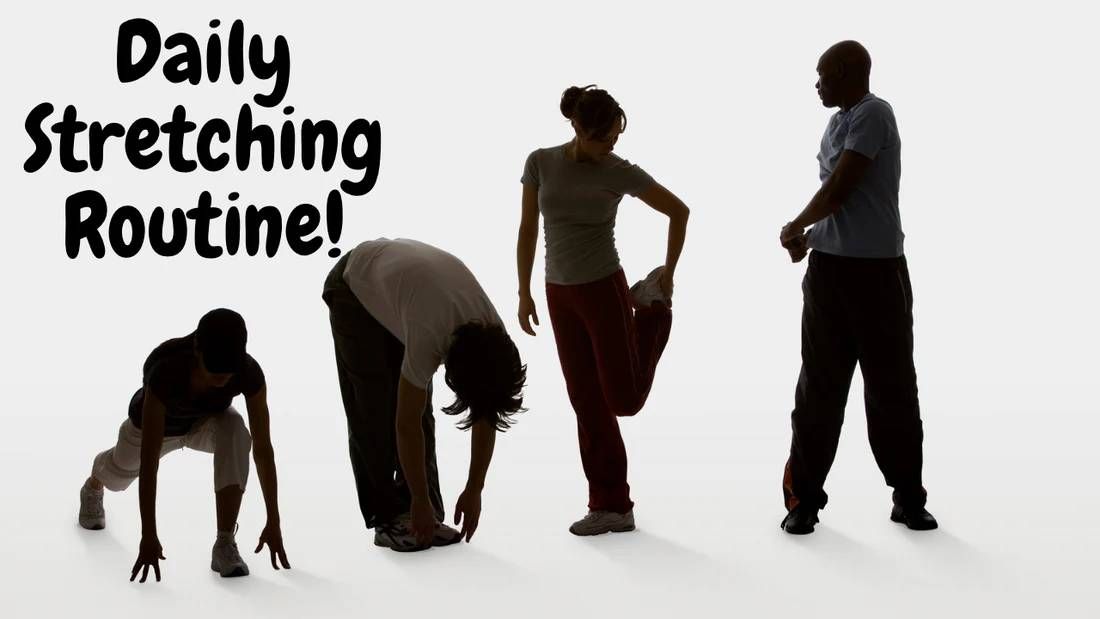

Discover the transformative power of regular stretching and its profound impact on your overall health and well-being. Let’s learn more about this topic below with Eggy Car, as we explore the science-backed benefits of incorporating stretching into your daily routine.
Stretching is often overlooked in our fast-paced lives, but its significance cannot be overstated. Regular stretching offers a myriad of benefits that extend far beyond simply improving flexibility. It’s a crucial component of overall fitness and wellness that can enhance both physical and mental health. By dedicating time to stretch, you’re investing in your body’s longevity and performance.
The practice of stretching has been around for centuries, with roots in ancient yoga and martial arts traditions. However, modern science has now caught up, providing concrete evidence of its multiple benefits. From improving posture to reducing the risk of injury, stretching plays a vital role in maintaining a healthy body.
One of the key advantages of stretching is its accessibility. Unlike many other forms of exercise, stretching doesn’t require special equipment or a gym membership. It can be done anywhere, at any time, making it an ideal addition to even the busiest of schedules. Whether you’re a seasoned athlete or someone just starting their fitness journey, incorporating regular stretching into your routine can yield significant results.
The physical benefits of regular stretching are numerous and well-documented. Let’s delve into some of the most significant advantages that scientific research has uncovered.
Perhaps the most obvious benefit of stretching is increased flexibility. As we age, our muscles naturally become tighter and less flexible. Regular stretching helps to counteract this process, keeping muscles long, lean, and flexible. This improved flexibility translates to an increased range of motion in your joints.
A study published in the Journal of Strength and Conditioning Research found that consistent stretching can increase flexibility by up to 30% in just four weeks. This enhanced flexibility not only makes everyday activities easier but also improves athletic performance across various sports and fitness activities.
Moreover, increased flexibility contributes to better posture. When muscles are flexible, they’re less likely to become tight and cause postural imbalances. This can lead to reduced back pain and a decreased risk of injuries related to poor posture.
Contrary to some misconceptions, stretching doesn’t just benefit flexibility – it also plays a crucial role in muscle performance. When muscles are regularly stretched, they become more pliable and responsive. This improved muscle condition leads to better overall performance during physical activities.
Research published in the Medicine & Science in Sports & Exercise journal has shown that regular stretching can increase muscle strength and power. This is particularly true for dynamic stretching, which involves moving parts of your body while gradually increasing reach, speed of movement, or both.
Furthermore, stretching significantly reduces the risk of injuries. When muscles are flexible and well-conditioned, they’re less likely to tear or strain during sudden movements or high-intensity activities. A study in the British Journal of Sports Medicine found that athletes who incorporated regular stretching into their routines had a lower incidence of muscle strains and tears compared to those who didn’t stretch regularly.
Another key benefit of regular stretching is improved circulation. When you stretch, you’re essentially massaging your muscles and promoting blood flow throughout your body. This increased circulation helps to deliver more oxygen and nutrients to your muscles and organs, promoting overall health and well-being.
Enhanced circulation also plays a crucial role in reducing muscle soreness and speeding up recovery after intense physical activity. A study in the Journal of Athletic Training found that individuals who performed regular stretching exercises experienced less muscle soreness and faster recovery times after workouts compared to those who didn’t stretch.
Moreover, improved circulation through stretching can have positive effects on cardiovascular health. While not a substitute for aerobic exercise, regular stretching has been shown to help lower blood pressure and reduce the risk of cardiovascular diseases.
While the physical benefits of stretching are well-known, the mental and emotional advantages are equally important and often overlooked. Regular stretching can have a profound impact on your mental well-being and overall quality of life.
One of the most significant mental benefits of stretching is its ability to reduce stress and promote relaxation. When you stretch, you’re not just working your muscles – you’re also engaging in a form of mindfulness practice. Focusing on your body and breath during stretching can help calm your mind and reduce mental tension.
Research published in the Journal of Physical Therapy Science has shown that regular stretching can significantly reduce levels of cortisol, the body’s primary stress hormone. Lower cortisol levels are associated with reduced stress, improved mood, and better overall mental health.
Moreover, the relaxation induced by stretching can help improve sleep quality. A study in the Journal of Physiotherapy found that individuals who performed stretching exercises before bed experienced improved sleep quality and duration compared to those who didn’t stretch.
Regular stretching can also enhance cognitive function and mental clarity. When you stretch, you increase blood flow to the brain, which can help improve focus and concentration. This is particularly beneficial for those who spend long hours sitting at a desk or engaged in mentally demanding tasks.
A study published in the Perceptual and Motor Skills journal found that participants who engaged in regular stretching exercises showed improved cognitive performance, including better memory and increased attention span.
Furthermore, the mindfulness aspect of stretching can help clear mental clutter and improve overall mental clarity. By focusing on your body and breath during stretching, you’re practicing a form of meditation that can help reduce mental fatigue and increase mental alertness.
Now that we’ve explored the numerous benefits of stretching, you might be wondering how to incorporate it into your daily routine effectively. The good news is that stretching doesn’t require a significant time commitment to reap its benefits.
There are several types of stretching, each with its own benefits and appropriate times for use:
. Static Stretching: This involves holding a stretch for a prolonged period, typically 15-60 seconds. It’s best performed after a workout or when your muscles are already warm.
. Dynamic Stretching: This involves moving parts of your body and gradually increasing reach, speed of movement, or both. It’s ideal as a warm-up before physical activity.
. PNF (Proprioceptive Neuromuscular Facilitation) Stretching: This advanced technique involves alternating between stretching and contracting the muscle group being targeted. It’s often used by athletes and physical therapists.
. Ballistic Stretching: This involves bouncing or jerking movements to push your body beyond its normal range of motion. It’s generally not recommended due to the increased risk of injury.
To get the most out of stretching, aim to incorporate it into your daily routine. Here are some tips to help you get started:
Start with 5-10 minutes of stretching each day. You can gradually increase this as you become more comfortable and flexible.
Focus on major muscle groups, including your calves, thighs, hips, lower back, neck, and shoulders.
Remember to stretch both sides equally. If you stretch your right hamstring, make sure to stretch your left as well.
Breathe deeply and regularly while stretching. Proper breathing helps you relax and increases the effectiveness of your stretches.
Hold each stretch for about 30 seconds. For problem areas, you may need to hold for 60 seconds or longer.
Don’t bounce while stretching, as this can cause small tears in the muscle which can leave scar tissue as the muscle heals, tightening the muscle further.
Remember, stretching should never be painful. If you feel pain, you’ve stretched too far.
To make stretching a consistent part of your routine, consider combining it with other activities:
Stretch while watching TV or listening to podcasts.
Incorporate stretching into your work breaks. Even a few minutes of stretching can help relieve tension from sitting at a desk.
Practice yoga, which combines stretching with strength-building and mindfulness.
Stretch before and after other forms of exercise to improve performance and reduce the risk of injury.
Remember, consistency is key when it comes to stretching. The benefits of stretching accumulate over time, so make it a regular part of your daily routine for the best results.
As we’ve explored throughout this article, the benefits of regular stretching extend far beyond simply improving flexibility.